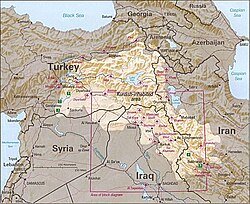More than ‘paan’ itself, it was the ‘paandaan’ – an ornamental casket that was integral to most households. Initially it remained the sole preserve of the Nawabs. From the nobility, it didn’t take long for this charming objet d’art to make its presence felt in middle-class homes. In time the ‘paandan’ acquired a quintessential heirloom status.
There was a time when ‘Paan’ was regarded as the centerpiece of cultural refinement as epitomised by the warmth and gracious charm of ‘Lakhnavi Culture’, a legacy of the nawabs of Avadh, who held sway from their capital in Lucknow, with a natural flair for all that was sensual and aesthetic.
This was especially true of the manner in which paan was offered to guests evolved into a genteel ritual of hospitality, with that rare touch of finesse; and the ladies were always better at this than anyone else.
More than the ‘paan’ itself , it was the ‘paandaan’ – a ornamental casket integral to most households. Initially it remained the sole preserve of the Nawabs. From the nobility, it didn’t take long for this charming objet d’art to make its presence felt in middle-class homes. In time the ‘paandan’ acquired a quintessential heirloom status.
Today ‘Paan’ is mostly associated with its ubiquitous residual juice people spit out flagrantly in a disgusting red torrent across walls, in public toilets, pavements, even roads, as a despicable graffiti. What’s worse is it’s so hard to get rid of, both in terms of the irremovable stains it leaves behind or the habit of chewing ‘paan’ itself, deeply embedded in the psyche of people from this part of the world.
But I don’t intend to dwell on that aspect for too long. As it is there is a surfeit of all such matters that are negative, sordid, unpalatable and revolting, so why add to the mess. Perhaps it may sound like escapism, but I prefer to term it as a romanticism associated with those half-forgotten times of a bygone era.
Since chewing paan is uniformly prevalent across the length and breadth of India, it’s only natural that ‘paandan’, too, have proliferated, too, like ‘faithful followers’.
Usually made of silver, A ‘paandan’ was an ornamental container to keep paan (betel leaf along with all its necessary ingredients such as a kind of flavoured and fine cut tobacco leaf (zarda), finely hand cut betel nut (supari), Catechu paste (kattha), made from a crystalised extract from the Khair tree, widely distributed in India, a weak paste of slaked lime (choona), together with cloves, cardamom, and other accessories.
The size of a paan dan was approximately 4 inches high, 11 inches wide, and about 7 inches long and could weigh as much as a kilo. Every design was handcrafted by an artisan and each paandan had its own characteristics, individuality and uniqueness.
In time the ‘paandan’ would become a handy ploy to lend more finesse to the courtesan’s subtle repertoire of coquetry, especially for the very exclusive patrons.
As it were, courtesans had perfected their own language of amour every time they gently handed out a ‘paan’ to their admirers and suitors, with the utmost of care and ceremony, together with a whiff of promise and hope. Indeed, both the paan and the paandan soon became a vital accessory in the courtesan’s daily ritual of keeping alive as long as the evening lasted, this heady illusion of love.
But with the passage of time, the paandan shed its image of nawabi decadence and gained gradual prominence as an emerging element of social milleu and middle class respectability.
Usually made of silver, A ‘paandan’ was an ornamental container to keep paan (betel leaf along with all its necessary ingredients such as a kind of flavoured and fine cut tobacco leaf (zarda), finely hand cut betel nut (supari), Catechu paste (kattha), made from a crystalised extract from the Khair tree widely distributed in India, a weak paste of slaked lime (choona), together with cloves, cardamom, and other accessories.
With this shift, now it was mostly housewives playing the central role of charming hostesses to friends, neighbours and visitors. They took great pains to ensure that the ‘paandan’ became the ultimate symbol of gracious hospitality and inclusive, familial warmth.
I have some special memories of the paandan and its elaborate making-and-serving rituals, from my storehouse of childhood memories of Lucknow in the early 1960’s. My parent would often visit a certain Mr and Mrs Nizam. Father and Mr. Nizam were old Secretariat buddies. As avid tennis regulars playing for the office as the favourite doubles pair, just seemed to cement their friendship that much more.
While the gentlemen would settle down in the living room with their pipes, the ladies would move to an inner room, where they could be at ease and talk more freely. It was then that Mrs Nizam would bring out her ‘magical’ paandan.
It was customary to begin the process with a polite question: “Would you like to have a ‘paan’, a mere formality of course since preferences were already known, and hardly anyone said ‘no’ when it was home-made and offered like this. So Mum would naturally smile and nod.
Like an eager and fidgety 7-year-old I would hover around, watching everything keenly. To me it all seemed like some esoteric alchemy. And ‘Nizam Aunty’ (that’s what I’d always address as would say “Oh, no, my little Sweetheart! You can’t have this, it will spoil your teeth”.
There would always be a tone of mock severity in her gentle voice. But she always found it difficult to hide that faint trace of an amused smile. Mums would suggest I go and play with Birjis, Mrs Nizam’s 8-year-old daughter. But I wouldn’t budge from there.
And then Mrs Nizam would tell Mums “Well I suppose it would be all right to give the child half a ‘paan’leaf with a little sugar in it”. I would look upon this as a small treat and bonus. After that I didn’t mind going and playing with Birjis and her dolls.
But where would the paandan be without the ‘paan’ itself. Most people here in India tend to think that ‘paan’ is typically Indian. But ‘paan’s’ cultural roots go far beyond India and the subcontinent. As a matter of fact, chewing the mixture of areca nut and betel leaf is a tradition, custom or ritual which dates back thousands of years from India to the Pacific Ocean region.
Ibn Battuta describes this practice as follows: “The betel is a tree which is cultivated in the same manner as the grape-vine; … The betel has no fruit and is grown only for the sake of its leaves … The manner of its use is that before eating it one takes areca nut; this is like a nutmeg but is broken up until it is reduced to small pellets, and one places these in his mouth and chews them. Then he takes the leaves of betel, puts a little chalk on them, and masticates them along with the betel.”
Besides India, ‘paan’ known by a variety of other names is also taken in many other Asian countries and elsewhere in the world by some Asian emigrants, with or without tobacco. Some of the Asian countries where ‘paan’ is popular are Vietnam, Thailand, Cambodia, and Burma.
It also spread to East Africa via Madagascar and the Comoros by around the 7th century.
On the Indian subcontinent, betel chewing was introduced through early contact of traders from Sumatra, Java, and the Malay Peninsula with the Dravidian-speakers of Sri Lanka and southern India.
Since the introduction of tobacco from the Western Hemisphere to the Eastern Hemisphere, it has been an optional addition to paan.
It is interesting to note how over the years ‘paan’ has diffused and become an intrinsic part of popular culture. In South India and its nearby regions it is traditional to give two Betel leaves, areca nut (pieces or whole) and Coconut to the guests (both male and female) on any auspicious occasion. But then again, on any ordinary day, if a married lady visits someone’s house for the first time, she is given two Betel leaves, areca nut and coconut or some fruits along with a string of threaded flowers.
The betel leaf is grown in different parts of India. Some states where it is grown include West Bengal, Bihar, Assam, Andhra Pradesh, and Uttar Pradesh.
************************************************************************
Readers











